Edgelands: the untouched wilderness. For the past twenty years, I’ve been chasing them: those mythic waters where dream-fish dwell. And yet, until just a year ago, I had never even heard of Palmyra Atoll.
While researching a shortlist of the world’s most inaccessible fisheries, Palmyra Atoll flickered onto my radar. A distant coral crown in the Central Pacific, it lies five degrees north of the equator, between Hawaii and American Samoa.
Once a strategic base during World War II, it is now a protected marine reserve with tightly restricted access. Then, by a twist of fate, I was fishing with a friend in Ascension Bay, Mexico when he casually mentioned, “I think I have some documentation about that place.” He handed me a prospectus—Fishing For Science—detailing fish-tagging research at Palmyra Atoll.
That document led me to Kydd Pollock, the scientist behind two decades of tagging apex flats species on Palmyra: giant trevally, bluefin trevally, peach-faced triggerfish and titan triggerfish. When we finally connected on a call, Kydd laid out the scope of the research and its importance for fisheries science. Skeptical at first, I had many questions. How does tagging fish help us? What value can the science offer us?
They didn’t have enough data on triggerfish yet, and that’s where Kydd and I really got deep into the conversation. I suggested a few different approaches that might yield better results, and something clicked between us.
By the end of the call, we both agreed—it made sense for me to join a future research expedition, if chance allowed it. I didn’t hold my breath.
Then, in early 2025, the message came. Kydd: “It’s a go.”
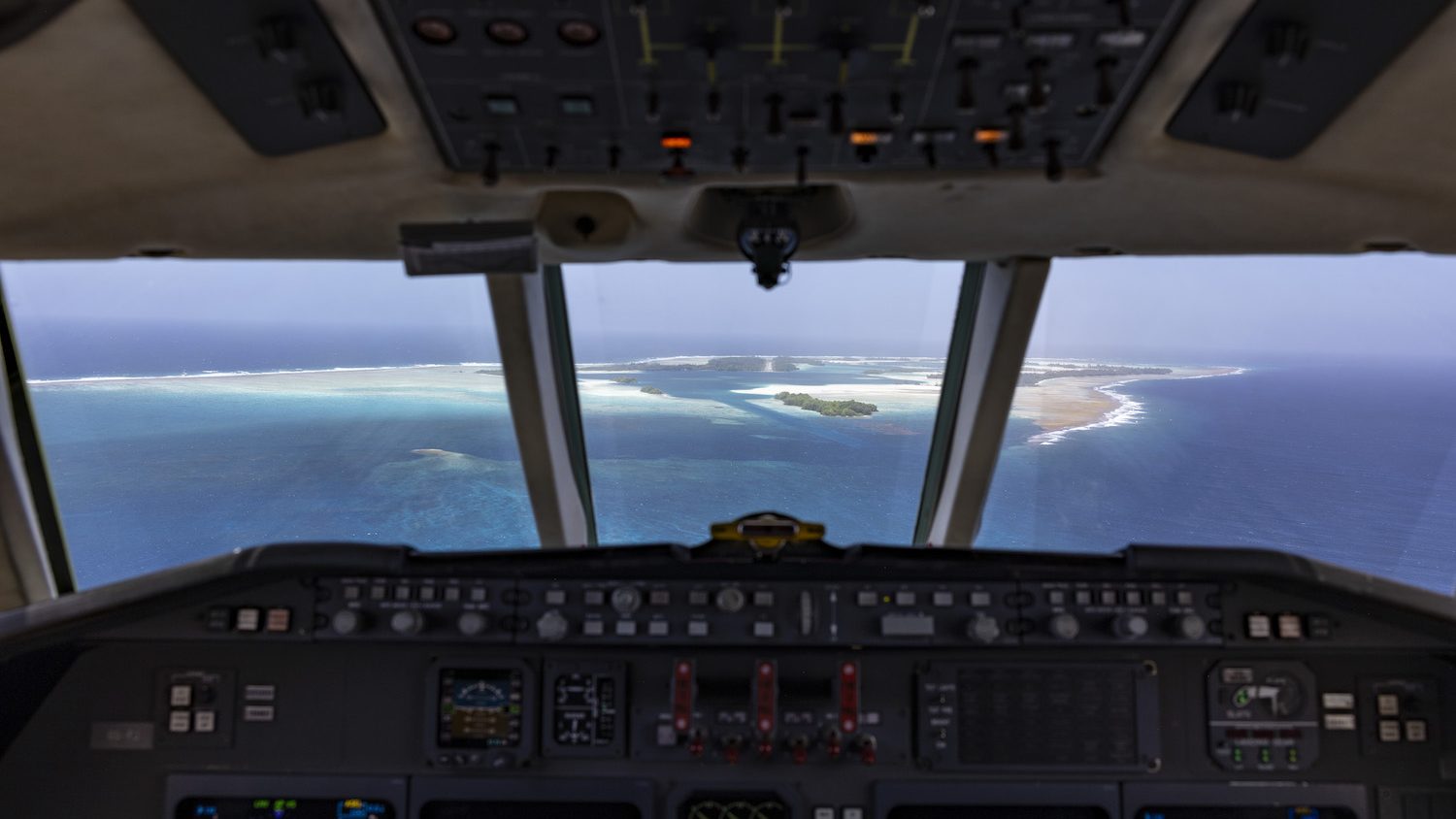
First Contact
Preparations began in earnest. Medical checks, gear lists, ecological compliance: everything was methodical. Caitlin, the logistics coordinator, ensured that no detail went unchecked. Even our clothing was frozen for 48 hours to prevent any invasive species from hitching a ride. At the airfield on Honolulu, the Falcon 900 waited. Gear stacked. Excitement buzzed. A 2.5-hour flight over the endless Pacific led us past Kingman Reef—one of the world’s least seen sanctuaries. And then, Palmyra emerged like a dream through the cockpit glass.
Chris, the island manager, welcomed us as we stepped into a living, breathing conservation marvel. Lush trees rang with the cries of seabirds, white-tailed tropicbirds circling overhead.
WWII relics lay scattered throughout the jungle—bunkers, airstrips, crumbling roads. Nature was slowly taking over again. After a tour of the facilities and a briefing from the U.S. Fish and Wildlife Service, Kydd gathered the team and said, “Fishing in 20 minutes!”
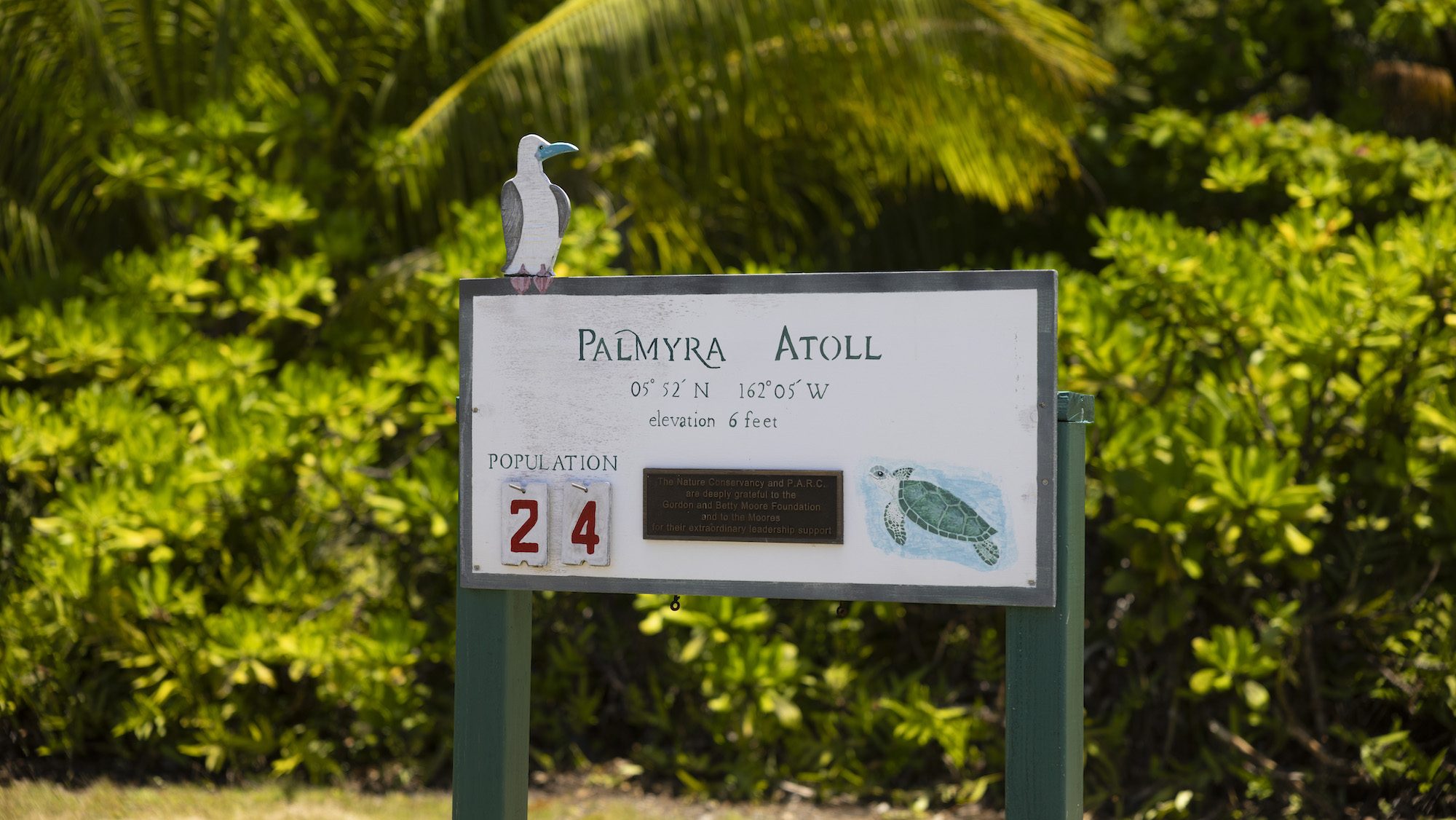
Kydd and I paired up with Baz and Dave for a session in the western inner lagoon. We moored the boat along a slender bar of sand that stretched from the flats into the deeper water, a perfect ambush point. We’d barely started when chaos erupted behind me: a loud splash, water thrashing, and Kydd’s voice cutting through the air: “GT, GT!”
Dave had hooked into a giant trevally (often called GT’s by anglers) on just his third cast. Kydd sprang into motion, pulling the anchor, jumping into the boat, firing up the motor, and hauling Dave aboard—all in one fluid move. As the boat zipped past, I leapt in.
“Man, you move fast!” I shouted as I landed beside Dave, whose rod was bent deep, locked in battle. “Did you see it? Is it big?” I asked, while Kydd deftly played cat-and-mouse with the GT as it tore through the lagoon’s depths.
Then we saw it—the flash of silver and blue rising from below. I reached out, grabbed the leader, and eased the fish alongside the boat. We made landfall on the far side of the lagoon, and that’s where I tagged my first-ever fish: a stunning 92 centimeter giant trevally. The tagging process was straightforward, but far from easy.
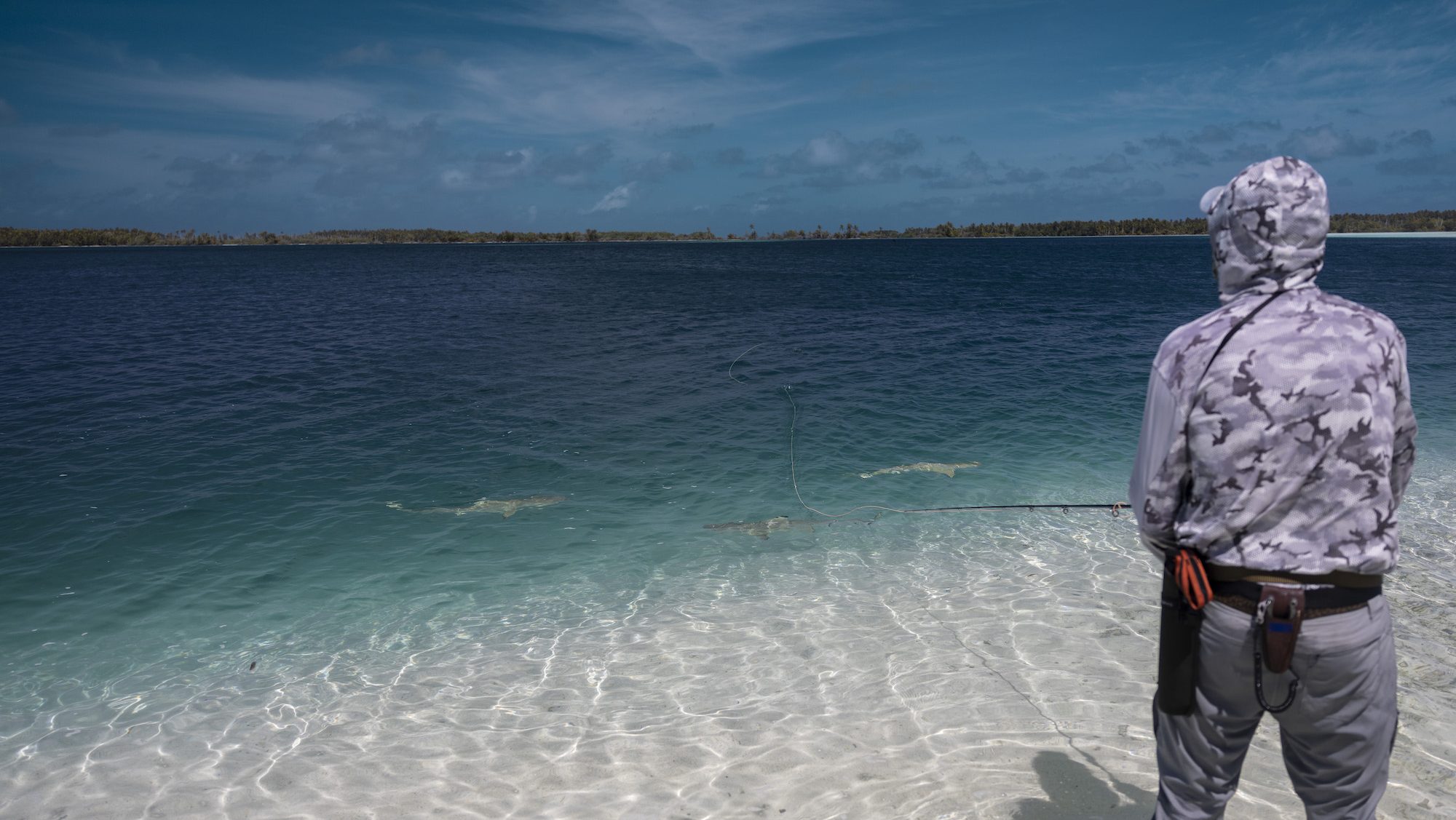
Tagging the Fish
Whoever was closest to the angler would have to quickly assess the size and strength of the fish, and the jagged obstacles it was heading for. It often required us to grab his line and hold it as high above our heads as possible while running after the fish.
There were times that you simply had to grab the line and pull the fish away from the ensuing sharks, especially the smaller Bluefin Trevally. You subdue the fish but, contrary to how I was used to landing GTs, I was discouraged from grabbing their tails with a glove as the pressure blackened the area on the fish, making a target for sharks.
Once you have the fish under control, you have to scan the fish for a recapture on its left side between the head and dorsal. The PIT scanner will make a triple beep if no tag is located.
Then a tag is selected and inserted with a small handheld applicator. It is scanned again for a two-beep confirmation, which also indicates a recapture. I stood by as we recaptured two fish on that trip and it’s truly exciting stuff.
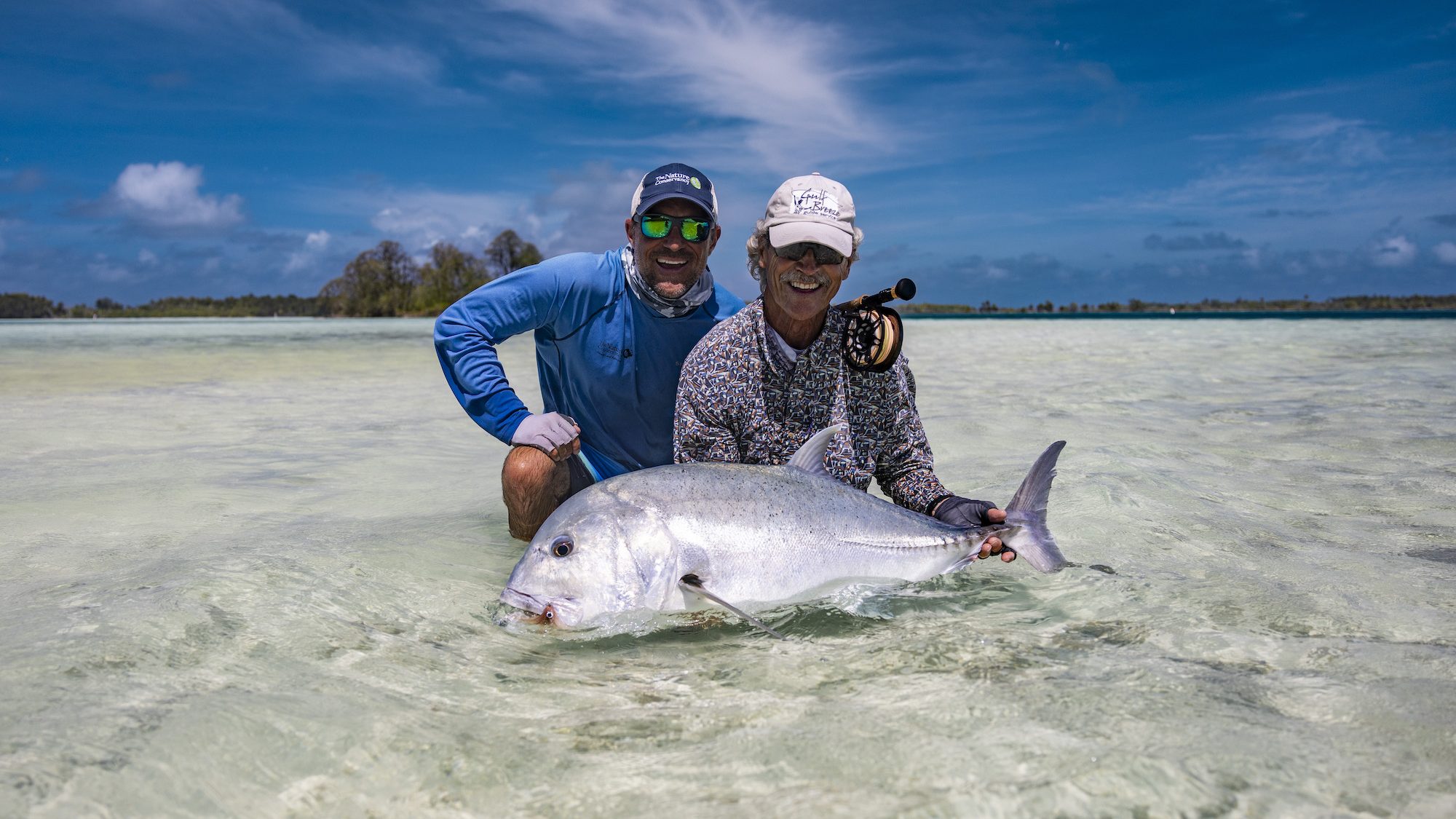
The fish is then measured in fork length and total length, revived and released. I saw Kydd cover large distances across the flats in defiance of the ever-lurking sharks; he took the safe release of every fish very seriously. All the tagging data is correlated by a GPS tracker and scientist notes and then the data is crunched at a later stage.
We continued the day’s fishing by tagging a few more bluefin trevally before we returned to base. On the evenings that followed, everyone on the Island would gather for sundowners and I took the opportunity to speak with with numerous passionate professors, scientists and volunteers that all got to call this special place home for a few precious months of the year. It felt like my mind and fascination expanded daily.
The weekly schedule was laid out clearly, and every evening after dinner, the researchers and their assistants gathered in the rec room to prepare, tackle and fine-tune the next day’s plan. This is where I could see Kydd’s fishery management policy put to the test.
One of the guiding principles was to fish different water each day. Palmyra’s magic lies in its endless variety. It’s a living, breathing patchwork of changing habitats—cuts, ledges, overhangs, sand flats, relic bunkers, drop-offs and channels.
Take a few hundred steps in any direction and the terrain transforms completely. Of all the atolls I’ve explored, Palmyra is by far the most densely packed with fishable diversity.

Pulling the Trigger(fish)
The triggerfish on Palmyra blew my mind. There were days we saw so many that it was hard to trust what we were seeing. The sheer size of some of them was staggering. More than once I heard someone exclaim, “That’s impossible… that can’t be a trigger!”
You’d start a walk along the flats and spot what looked like scattered debris—odd shapes, just sitting there, perfectly still against the sand and mottled bottom. Then you’d approach, and one would explode off the flat in a puff of sand. It hits you: they’re all triggers.
Ask any dedicated trigger angler, and they’ll tell you—chasing these fish is a masterclass in frustration. But Palmyra had moments that turned that reputation on its head. There were triggers so aggressive they practically tried to climb into the boat to eat our flies.
Landing them, though, was another matter entirely. Still, we managed to tag a good number on the trip, and Pete was optimistic. He said we might finally have enough data to start unlocking some real insights.

Think Like a GT
Pete turned out to have a wealth of information about the fish and their whereabouts, especially with GTs and bluefin trevally. He called a recapture on a big bluefin even before we arrived at a spot and a moment that stood out for me was when he predicted the location and behavior of a specific GT.
It was in the early hours of the morning that we drifted up a narrow flat nestled between two jungly old fighter airstrips. He had mentioned that we were going to look for a single GT that makes its morning run high up on the flat.
It wasn’t 5 minutes and the GT appeared in front of us, as if by magic. We had two shots at the fish, he ate both times, but he eluded capture in the end. That was the moment I realized the combination of scientific data and Kydd and Pete’s years of hard-earned insight had come together to form a fishery management plan unlike anything I’d ever seen.
With a surge of curiosity, I dove headfirst into the data and insights that Kydd and Pete had been referencing all along. I couldn’t stop thinking about the countless times I’d guided clients for GTs, confidently explaining their behavior and movements—only to now realize how wrong I’d been.
Sure, we caught fish, but what I was seeing now painted a completely different picture. There was only one way to know if it all held up: test it.
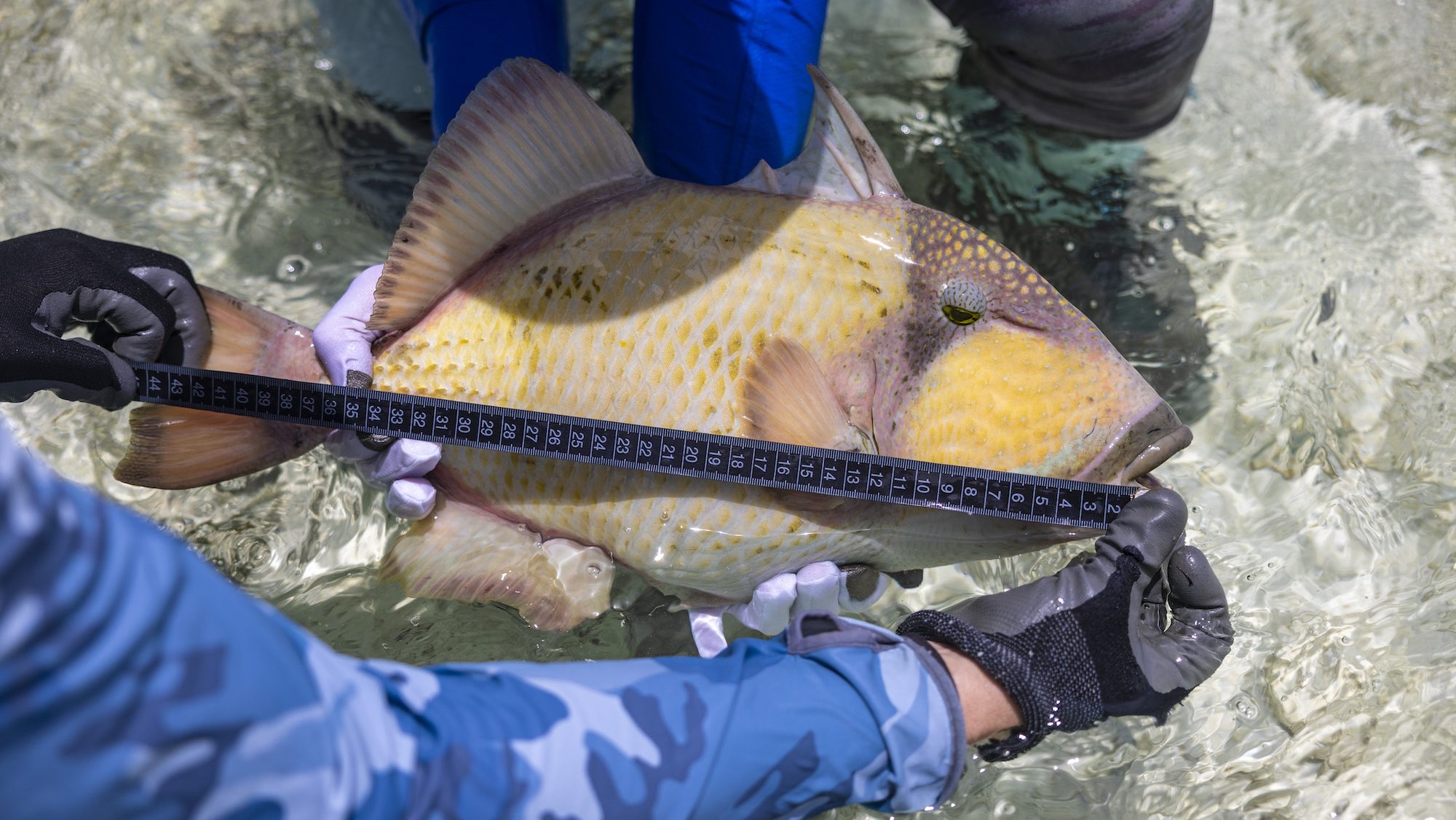
Matrix Moment
On our final evening, we headed to the South Flat where I thought I had identified three individual GTs exhibiting behavior that aligned with what the science suggested. We set up at a junction point, and I told the anglers to wait and watch. Minutes dragged. I’m famously impatient when it comes to GTs. But then something shifted. The world seemed to go quiet. My senses sharpened. It felt like green numbers were cascading down in front of me—I was in the Matrix.
The first GT appeared. It charged the fly twice, but we couldn’t get a solid hook-up. Disappointment was thick, but we held out. The second fish showed up soon after, a stunning black GT trailing a shark.
Baz made the perfect cast and got a crushing eat, but that too ended in heartbreak. We were all buzzing so hard from the action that we didn’t even see the third GT until it was already behind us, fading into the blue.
The team was electric as we made our way back to the boat, the anglers high on the adrenaline of what we’d just witnessed. But I was in a different headspace—quietly repeating to myself with a half-smile: “The science works.”
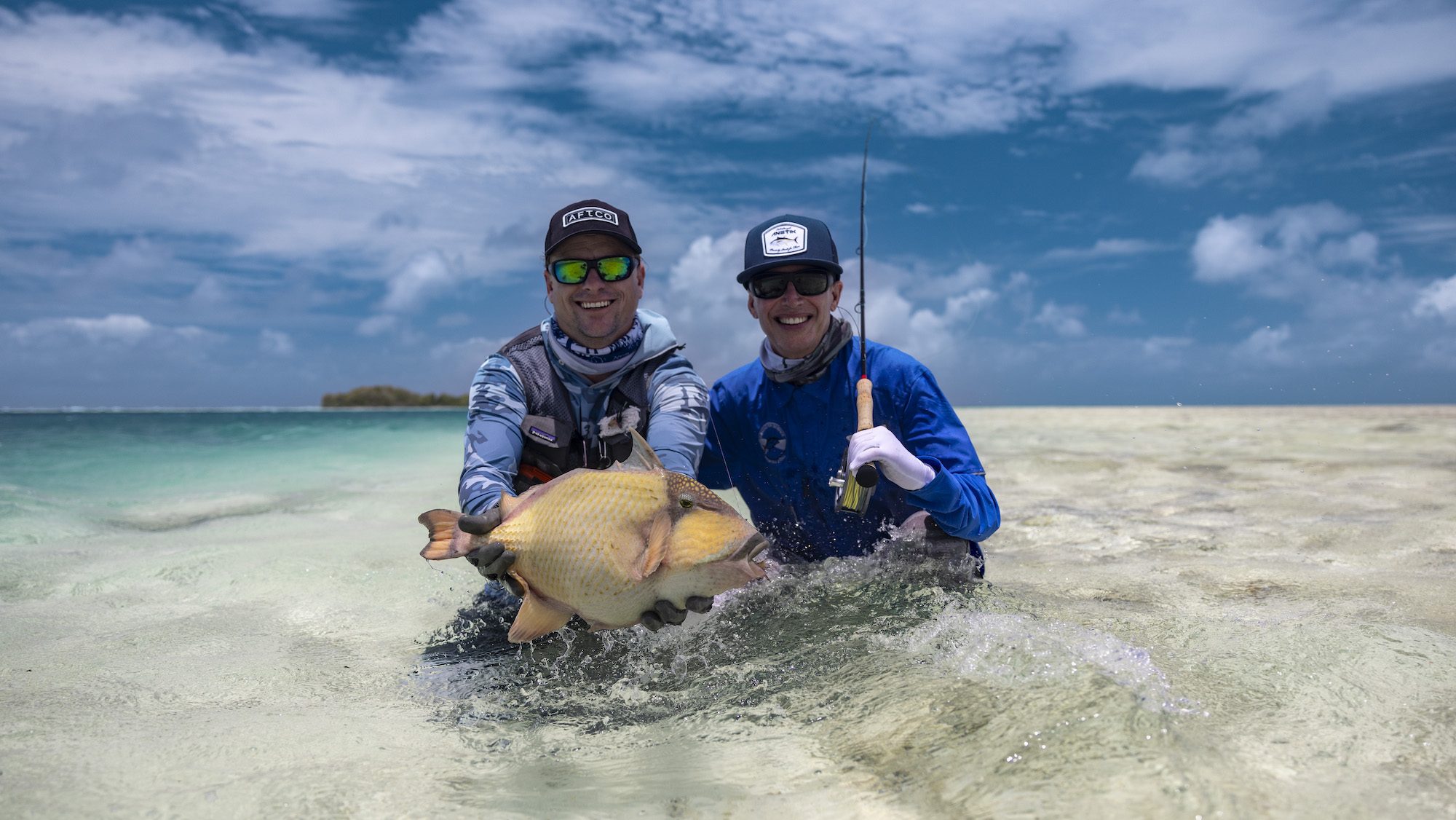
Palmyra: Epicenter of Research and Restoration
On our final evening, we gathered in the rec room for a series of presentations that brought the week full circle. The first covered the research conducted so far—what had been uncovered, what questions remained, and what it all meant for the future of fisheries and conservation.
Then Kydd took the floor to speak about FAD Watch, an ambitious initiative aimed at bridging the gap between purse seine tuna fleets, Satellite Buoy manufacturers, and conservation groups.
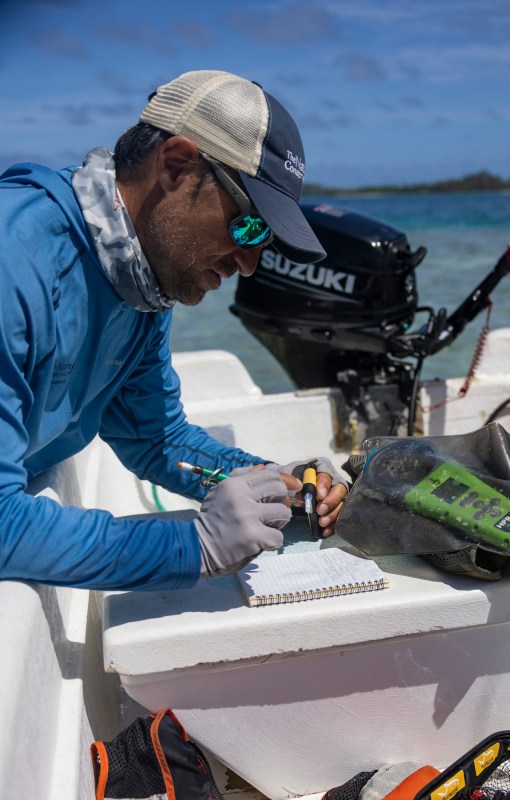
The goal? To intercept and recover these FAD (Fish Aggregation Device) drifting devices before they ground on the sensitive coral reef ecosystem.
It’s a story powered by sheer determination—of one person refusing to accept indifference and inaction as the norm. Kydd’s fight for accountability and collaboration in ocean conservation is nothing short of relentless.
But Palmyra’s triumphs don’t stop there.
Last year, the Guam kingfisher—a species extinct in the wild since 1993—was reintroduced to Palmyra. Four pairs are already nesting.
Almost 30,000 adults and 1.6 million juvenile invasive coconut palms have been removed in the last 6 years through a USFWS and TNC collaboration, allowing native flora to reclaim the land and provide critical habitat for nesting seabirds like frigates and boobies. Some islands now resemble what they might have looked like two centuries ago.
In 2011, every invasive rat on the atoll was eradicated, revealing two previously unknown crab species at Palmyra and a 400% population boost for crustaceans on the atoll.
These victories are a testament to the people who have dedicated their lives to preserving this rare corner of the planet.
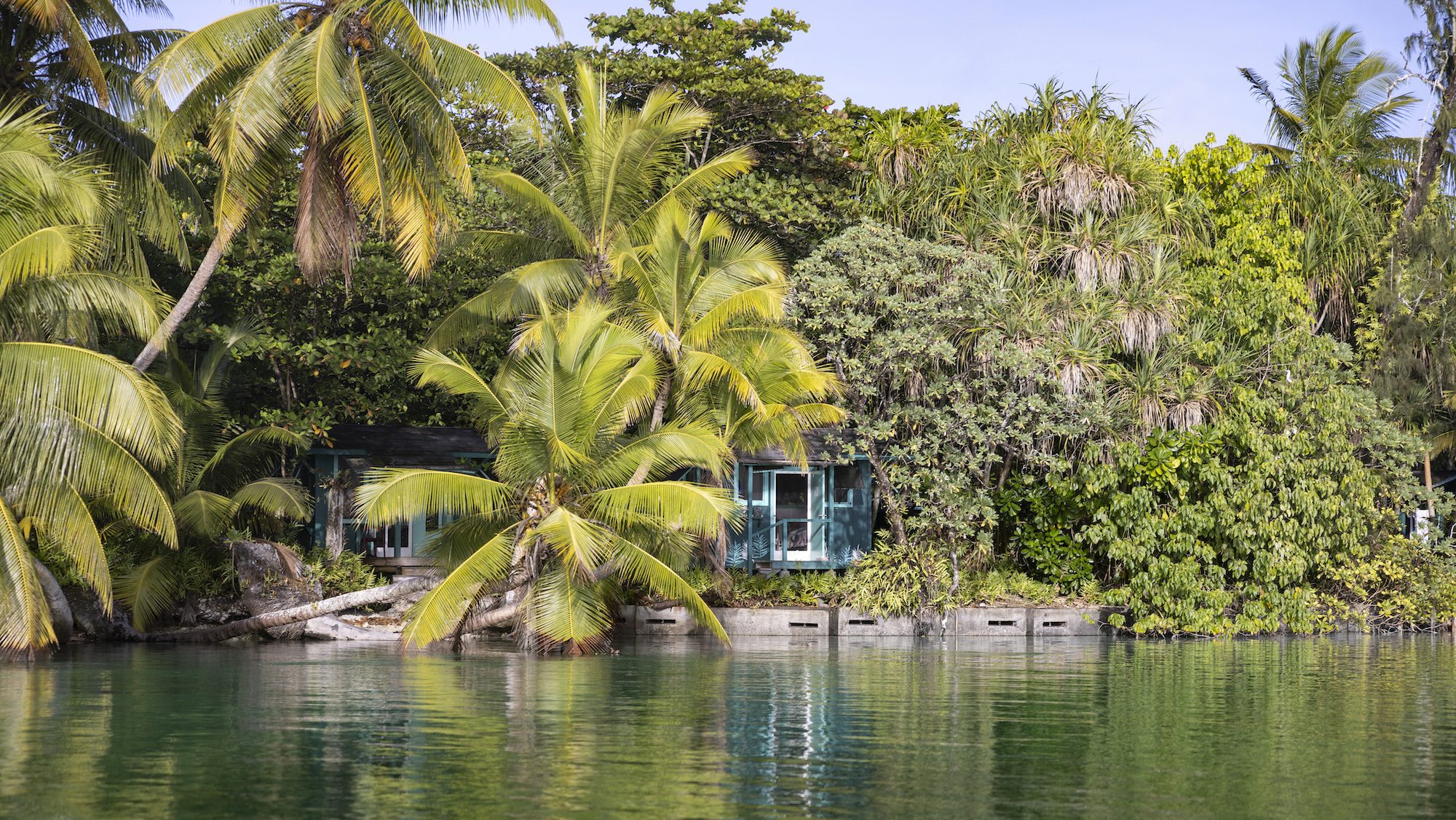
One Last Dance
On our final morning, we set out for one last time before our flight that afternoon. Dave—ever the optimist and firm believer that his final session on the atoll would always be the best—was out with Kydd and Baz. By now, I should’ve known better than to doubt how easily bold predictions come true on Palmyra.
About an hour before we had to wrap things up, Baz hooked into a fish along the lagoon’s edge. There was a bit of back and forth between him and Kydd, trying to work out what he’d connected with. Then Kydd suddenly shouted, “I’m getting the boat—this is a GT!”
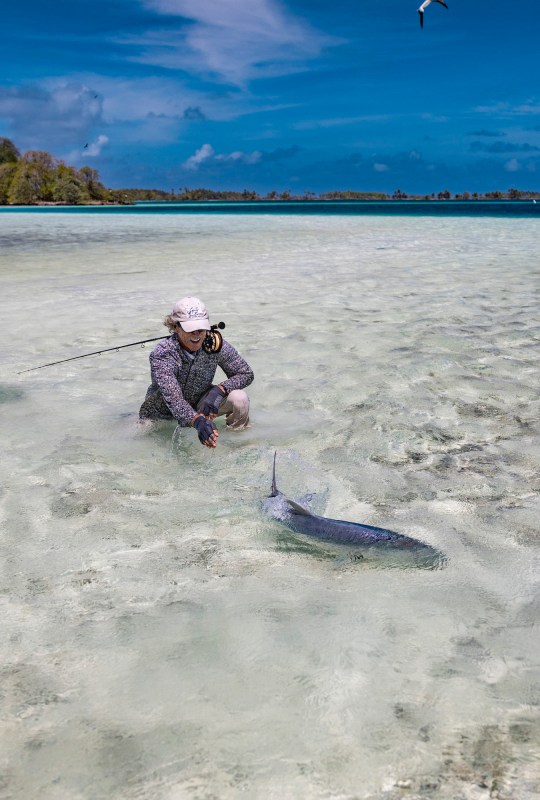
In a flash, we were in motion. Chaos turned to coordination as Baz’s rod bowed deep, nearly to the reel seat. The fish surged, peeling off line with a kind of force that left no doubt. It was big.
Kydd, calm and precise at the helm, kept us right on top of it, never letting the fish get too far ahead. Baz, seasoned and steady from years of tarpon battles, handled the rod with finesse.
Minutes passed like heartbeats. When we finally brought the fish boat-side, we were awestruck. A brute of a GT, 108 cm of pure muscle, with the kind of girth that easily put it north of 70 pounds.
We quickly brought it ashore for tagging and measurement. Holding that fish in my hands, seeing its flawless condition, I couldn’t help but admire its power and resilience.
But as we released it and watched it disappear into the depths, it didn’t feel like the closing scene of an epic adventure. It felt more like a beginning—a glimpse into what’s possible when science, conservation, and passion collide.
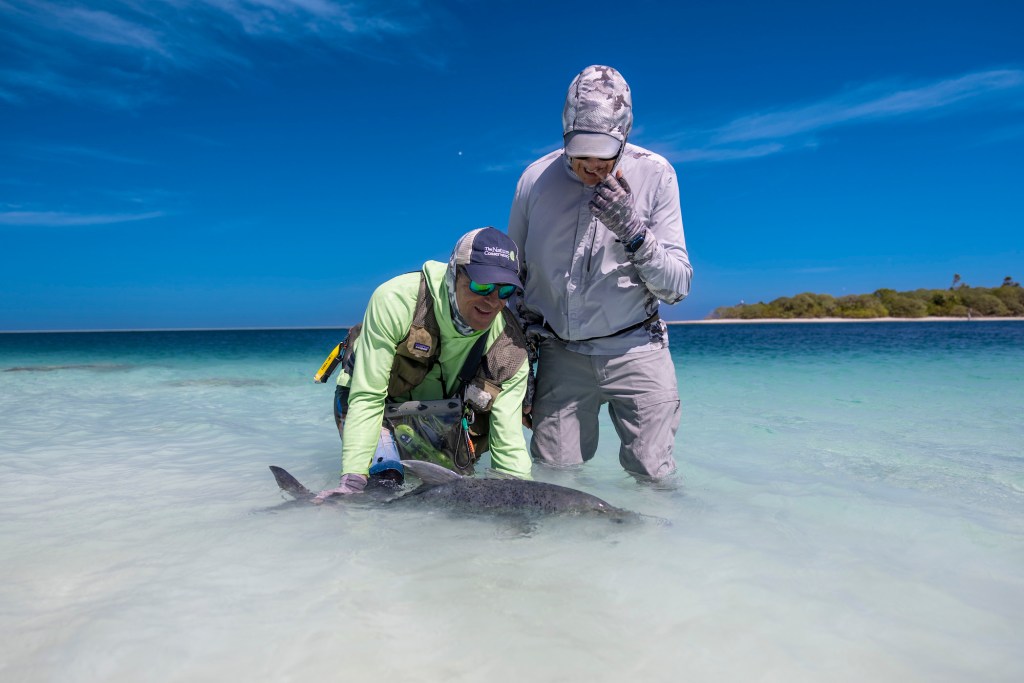



Francois
Great piece, lived and written!
Respect, amigo!
Petrus